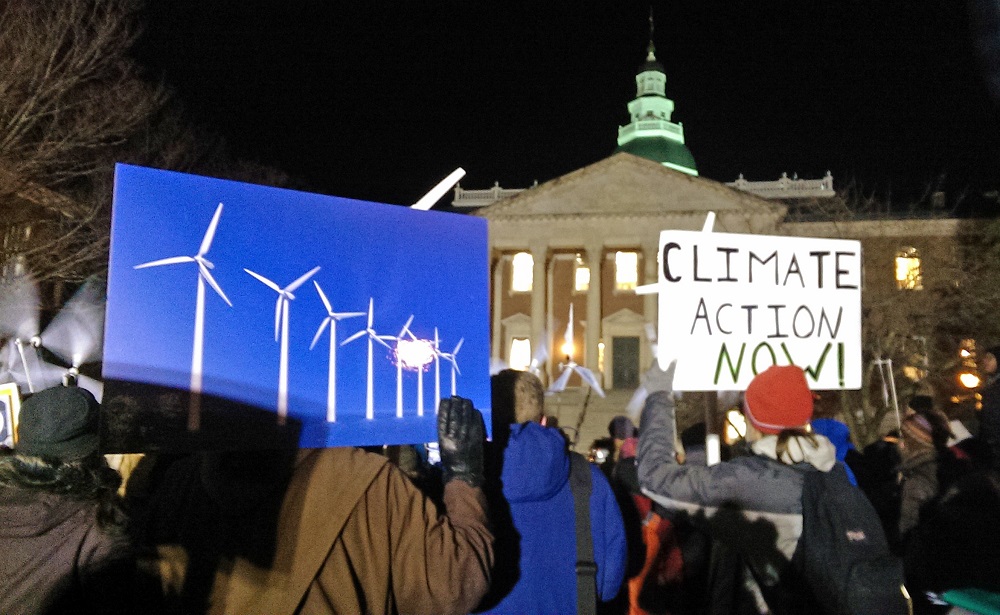The seas are rising, and we are rising to the challenge.
That is the simple message that lies at the heart of what we do here at CCAN. That was the message of over 200 Marylanders this summer who attended and testified before the Maryland Commission on Climate Change calling for deep and science-based cuts in climate-warming emissions. That was the message of over 85 Maryland congregations that rose up climate justice from the pulpit last fall.
And now, finally, Maryland leaders have heard our call and have put forward a bill to meet the scale of the climate crisis. The Greenhouse Gas Reduction Act of 2016 (SB 323/HB 610), sponsored by Delegate Kumar Barve and Senator Paul Pinsky, would renew Maryland’s statewide commitment of reducing greenhouse gas emissions by 25 percent by 2020, and extend that goal to achieve a 40 percent reduction in greenhouse gas emissions by 2030.
The legislation follows up on the historic bi-partisan vote last fall by the Maryland Commission on Climate Change – made up of union leaders, businesses, environmental groups, and six Republican cabinet secretaries from the Hogan administration. That Commission voted unanimously to endorse the Greenhouse Gas Reduction Act to slash Maryland’s greenhouse gas emissions 40% by the year 2030.
Under a Republican Governor, Maryland is showing that climate change is not a political issue. It’s a scientific fact. And by choosing to acknowledge reality, and seize the very real economic growth opportunities that accompany climate action, Maryland can lead the way towards ending the partisan gridlock that too often stalls progress in Washington and other state capitals.
In order to achieve this significant new reduction goal, Maryland will have to revise and expand its 2013 Climate Action Plan, which contains strong goals and over 150 programs aimed at strengthening Maryland’s clean energy economy, improving our health, reducing waste, and protecting our climate. Key elements and benefits of that Plan include:
- Reducing Maryland’s greenhouse gas emissions by 55 million metric tons of carbon dioxide-equivalent annually.
- Raising the state’s renewable energy goals, requiring that 25 percent of Maryland’s electricity comes from renewable sources by 2020.
- Reducing waste by “reusing, recycling, composting and saving our way to Zero Waste, including an 85 percent reduction in generation of solid waste by 2030.”
- Boosting Maryland’s economy by creating $1.6 billion in economic benefits and 37,000 new jobs through smart, sustainable investments.
- Improving Marylanders’ health by reducing emissions of toxic air pollution and other harmful chemicals.
By passing the Greenhouse Gas Reduction Act of 2016, Maryland will join other climate leaders like California and New York, who have also set goals to reduce emissions by 40 percent by 2030. This Act will put Maryland on a path to achieving the 80-90% greenhouse gas reductions by the middle of this century, which scientists say will be necessary to prevent the very worst impacts of climate change.
We’ll keep you posted on the Greenhouse Gas Reduction Act’s progress and other climate-related bills as they make their way through the legislative process in Annapolis.





